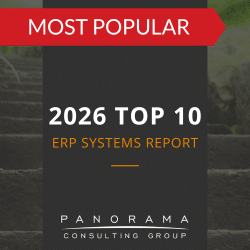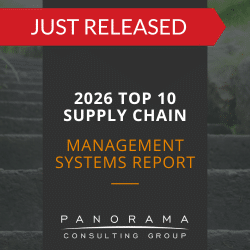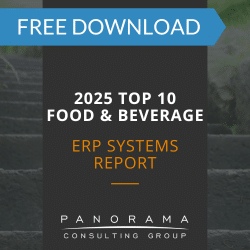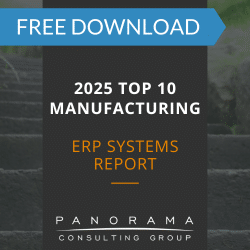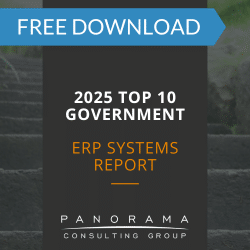- ERP automations often appear efficient but can quietly create delays, workarounds, and decision bottlenecks when they lack flexibility or real-world context.
- Common issues include oversimplified rules, unmanaged exceptions, hardcoded logic, and a disconnect between how systems operate and how teams actually work.
- Process inefficiencies aren’t caused by poor technology—they stem from weak workflow design, minimal user input, and missing change management strategies.
- Build smarter automations by focusing on adaptability, governance, cross-functional design, and continuous improvement.
As AI and automation saturate headlines, business leaders feel pressure to prove they’re on the digital frontier. ERP systems—often described as the backbone of modern enterprise operations—promise to make that leap easier. But beneath the streamlined processes, organizations are discovering something sobering: their processes may be fast, but they’re not moving in the right direction.
Much of today’s ERP automation looks efficient while masking deeper inefficiencies. Approvals get routed, systems log data, alerts trigger… but nothing actually moves forward. Worse, these automations can lock your business into narrow workflows that aren’t adaptable, and ultimately create manual workarounds disguised as digital progress.
If you’re leading an ERP system implementation or evaluating top ERP systems for manufacturing, you should carefully evaluate how each system handles automation. Automations aren’t inherently good or bad—but they are frequently misused. And if you’re not paying close attention, your digital transformation might be optimizing failure at scale.
Contemplating litigation?
We have multiple software expert witnesses available for provision of reports, depositions, and testimonies.
How Superficial Automations Create Hidden ERP System Inefficiencies
ERP automations that appear polished often rely on brittle logic and poor assumptions. They’re implemented with good intentions—usually speed, consistency, or compliance—but without the flexibility and context that real-world decisions demand. This creates a dangerous gap between how your ERP system performs and how your people actually work.
Here are six automation pitfalls to watch for—and how to address them early, before they become expensive problems baked into your system.
1. Oversimplified Rules
Many ERP automations are built around “if this, then that” rules.
For example, an invoice under a certain amount might go straight to payment, while a larger one gets sent to a manager. That sounds efficient, but it doesn’t leave room for gray areas.
What if the invoice is missing key details? Or what if it looks suspicious but still meets the approval amount?
When automations can’t handle these real-life exceptions, the process breaks down—and no one knows who should step in to fix it.
2. Automations Without Accountable Exception Handling
When a process doesn’t follow the expected path, is there a clear plan for where the transaction goes and who takes ownership?
ERP systems often send exceptions to someone’s queue, but without meaningful tracking, prioritization, or escalation logic. What results is a silent backlog. Finance doesn’t realize payments are stuck until vendors start calling, and leadership assumes the automation is working, because the metrics say so.
3. Hardcoded Rules
An ERP automation might work well today but turn into a bottleneck tomorrow.
For example, fixed pricing logic, shipping rules, or credit thresholds can all become liabilities when market dynamics shift. If these automations requires extensive IT support and weeks of reconfiguration, your business loses the agility to respond quickly.
ERP supply chain decisions, in particular, suffer when the automation layer lacks flexibility. Whether it’s adjusting lead times, rerouting shipments, or responding to supplier disruptions, rigid workflows can slow critical responses and drive up costs.
4. User Workarounds
When automation doesn’t align with how people work, they improvise. Spreadsheets, Slack messages, and side emails start carrying the real logic.
From a system dashboard perspective, it all looks fine—98% of tasks “automated.” But the 2% that are manual are usually the most critical. Off-system workarounds introduce risk, inefficiency, and compliance exposure that you won’t see until it’s too late.
5. Change Management That Masks Fragile Automation
A common mistake in ERP system implementation is treating automation as a purely technical exercise.
However, when organizational change management is weak, users disengage from automations. They click through required fields without fully adopting the workflow, rely on external tools like spreadsheets or email to get things done, and resolve exceptions offline.
These behaviors don’t show up in system reports—they’re invisible to dashboards and KPIs. As a result, leadership sees a process that “runs,” while the real work is being done manually behind the scenes. The inefficiency stays hidden because the system logs actions as completed, even if they didn’t happen as intended.
6. Governance Gaps That Let Inefficient Automations Stay Hidden
Once automations are live, many organizations assume the work is done. They trust the system’s logic and focus on usage metrics like completion rates or approval speed.
However, these metrics often reflect volume—not value. Without routine reviews, no one questions whether the workflow still fits evolving business needs, or whether it’s quietly creating delays or bad decisions.
A better approach is to build governance into your ERP implementation plan: review automations quarterly or annually with an enterprise software consultant. Treat it like a performance review. What’s working? What’s being bypassed? Where has the business outgrown the logic?
Building Automations That Actually Help
Partnering with an ERP consulting company that brings independent, vendor-neutral expertise can make the difference. Whether you’re evaluating different types of ERP systems or building out your next set of workflows, here’s what matters most:
Learn More About Inefficient ERP Automations
Superficial automation gives the illusion of progress. But underneath, it often hides inefficiency, operational debt, and growing frustration.
Want help evaluating your ERP workflows? A conversation with our ERP advisory team could reveal opportunities to shift from “it runs” to “it works.” Our enterprise software consulting isn’t about “getting the system live.” It’s about building a platform for continuous evolution.






